Key Takeaways
Discover comprehensive methods schools use to recognize graduates including halls of fame, diplomas, honors distinctions, ceremonies, and modern digital recognition displays that celebrate achievement.
Schools face a meaningful responsibility: recognizing graduates in ways that honor their achievements, inspire future students, and maintain lasting connections between alumni and their alma maters. From the moment students walk across graduation stages to decades later when they’re inducted into halls of fame, institutions employ diverse recognition methods that celebrate accomplishment while building community pride spanning generations.
This comprehensive guide examines how schools recognize graduates across multiple dimensions—immediate graduation acknowledgment, ongoing alumni engagement programs, distinguished achievement honors, and modern digital recognition innovations. Whether you’re an educational administrator planning recognition programs, an alumni association coordinator seeking engagement strategies, or simply curious about how institutions celebrate graduate success, this resource provides practical insights into recognition approaches that create lasting value for schools and their graduates.
Understanding Graduate Recognition: More Than Just Diplomas
Before exploring specific recognition methods, schools must understand what graduate recognition encompasses and why it matters strategically for institutional culture, alumni relations, and community building.
The Foundation: Diploma and Degree Recognition
The most fundamental form of graduate recognition remains the diploma itself—formal documentation certifying that students have completed prescribed courses of study and met graduation requirements. High school diplomas and college degrees serve as official credentials students earn through years of academic work, representing institutional validation of achievement.
According to the National Center for Education Statistics, a high school graduate is defined as an individual who has received formal recognition from school authorities through diploma granting for completing a prescribed course of study. This official recognition opens doors to higher education opportunities, career advancement, and professional credentialing that shape graduates’ futures for decades.
While diplomas provide essential documentation, effective schools recognize that a piece of paper alone doesn’t create the meaningful acknowledgment, emotional connection, or community celebration that transforms graduation from administrative milestone into memorable life experience worth honoring throughout alumni lifetimes.
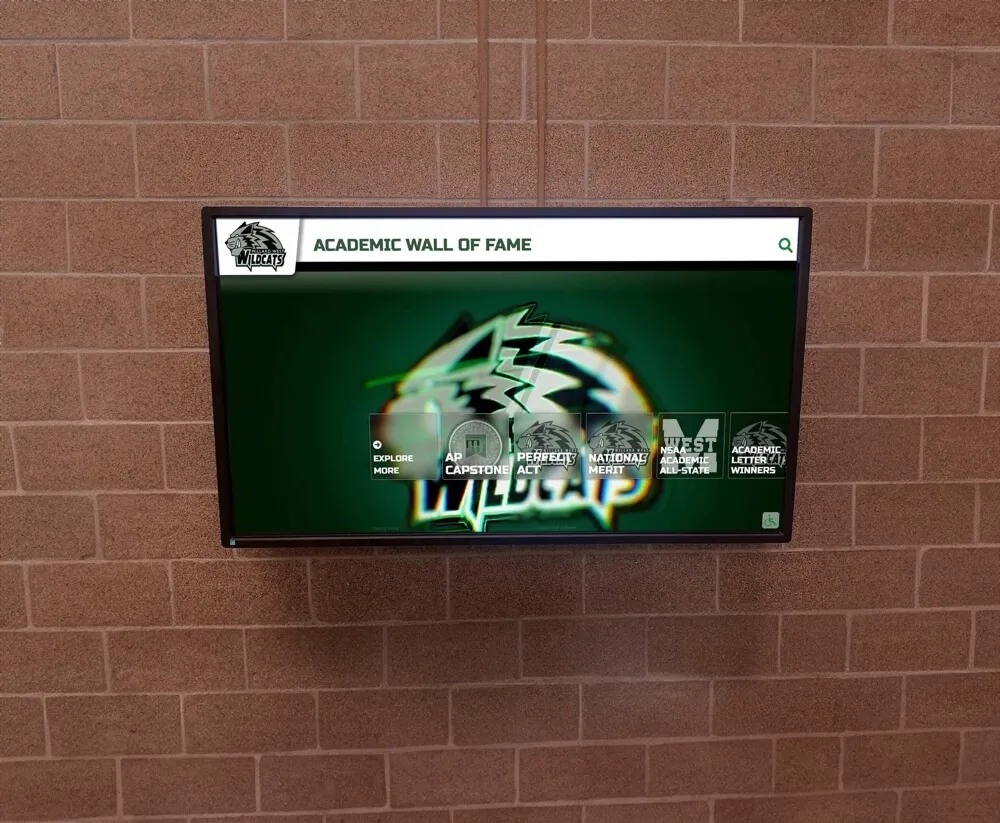
Recognition as Strategic Alumni Engagement
Graduate recognition extends far beyond the graduation moment, serving as ongoing strategy for maintaining alumni connections, encouraging institutional support, and building communities that span generations. Schools that view recognition solely as once-and-done ceremony miss tremendous opportunities for sustained engagement.
Strategic recognition programs create natural touchpoints for re-engaging graduates who might otherwise drift away from institutional involvement. Induction ceremonies, profile updates, anniversary celebrations, and reunion integrations provide meaningful reasons for alumni to reconnect with schools, classmates, and current students—strengthening emotional bonds that often translate into volunteer participation, mentorship involvement, and philanthropic support.
When graduates feel genuinely recognized and valued by their alma maters, they develop stronger connections manifesting through multiple channels. Research consistently demonstrates that recognition influences alumni giving rates, event attendance, referral enthusiasm, and overall institutional advocacy. Schools investing in comprehensive recognition reap dividends in engagement that pure fundraising appeals cannot achieve.
Traditional Graduate Recognition Methods
Schools have employed time-tested recognition approaches for decades, creating familiar traditions that graduates anticipate and value as meaningful acknowledgments of their achievements.
Graduation Ceremonies and Commencement Programs
Formal graduation ceremonies represent the most visible and emotionally significant recognition most graduates experience. These carefully choreographed events bring together graduates, families, faculty, administrators, and community members to collectively celebrate educational achievement through symbolic rituals that mark transitions from student to graduate status.
Key Ceremony Elements:
Traditional elements create meaningful experiences:
Processional and Recessional: Ceremonial marches establishing formal tone while providing visual representation of graduate cohort moving through institutional thresholds together
Individual Name Recognition: Calling each graduate’s name as they cross stages creates personal acknowledgment moments that families treasure and graduates remember for lifetimes
Diploma Conferral: Physical presentation of diplomas by administrators or board members symbolizes official transfer of educational credentials earned through years of work
Academic Regalia: Caps, gowns, cords, stoles, and tassels create visual unity while distinctions like honor cords acknowledge specific achievements publicly
Speeches and Addresses: Commencement speakers, valedictorian remarks, and administrative congratulations provide inspiration, perspective, and institutional blessing on graduate journeys
Honorary Degrees: Some institutions recognize distinguished individuals with honorary degrees during graduation, demonstrating achievement possibilities while adding prestige to ceremonies
Ceremonies typically occur in late May or early June for high schools and spring/fall semesters for colleges. Schools increasingly accommodate personalization—allowing decorated mortarboards, cultural regalia, or family celebrations—while maintaining ceremonial dignity that elevates graduation beyond routine administrative processes.
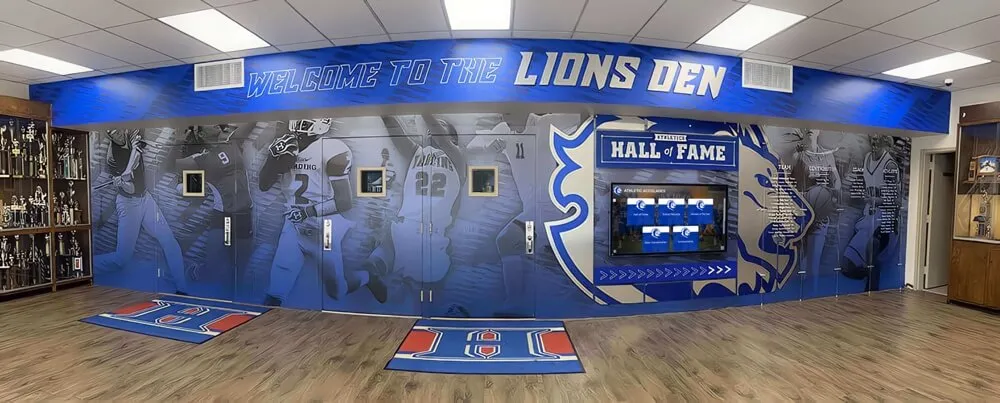
Academic Honors and Distinctions
Beyond basic graduation recognition, schools acknowledge exceptional achievement through honor designations that distinguish graduates who demonstrated outstanding academic performance, leadership, character, or specialized excellence.
Common Academic Honors:
Valedictorian and Salutatorian: Traditional recognition for highest-ranking graduates based on grade point average, class rank, or comprehensive achievement metrics. These designations carry particular weight in college admissions and scholarship competitions while providing honored students speaking opportunities during graduation ceremonies.
Latin Honors (Cum Laude, Magna Cum Laude, Summa Cum Laude): Higher education institutions award these distinctions based on GPA thresholds, typically cum laude (with praise) for 3.5-3.7, magna cum laude (with great praise) for 3.7-3.9, and summa cum laude (with highest praise) for 3.9-4.0. These recognitions appear on diplomas and transcripts, providing lasting documentation of exceptional achievement.
Honor Roll and Dean’s List Recognition: Many schools acknowledge graduates who consistently achieved academic excellence through multiple semesters or years, designating them as honor graduates or dean’s list scholars at graduation. This recognition validates sustained performance rather than single-semester achievement.
Departmental Honors: Subject-specific recognition for outstanding achievement in particular disciplines—English honors, science excellence, mathematics distinction—acknowledges students who excelled in specific academic areas even when overall GPAs might not reach highest levels.
Special Achievement Recognition: Schools may create categories recognizing community service excellence, leadership distinction, arts achievement, athletic success, or overcoming significant obstacles. These diverse honor categories ensure various forms of excellence receive appropriate acknowledgment beyond pure academic metrics.
Clear criteria and transparent selection processes maintain honor credibility. Schools that establish objective standards applied consistently build community confidence while ensuring recognition remains meaningful rather than diluted through overly broad inclusion.
Yearbooks and Class Composites
Yearbooks serve as tangible historical documents preserving graduate cohorts for posterity. These publications create permanent records showing who graduated together, what they looked like, how they participated in school activities, and what made their particular graduating class unique.
Beyond group documentation, yearbooks provide individual recognition through senior portraits, achievement listings, activity participation records, superlative awards (most likely to succeed, best personality, etc.), and personal messages or quotes graduates contribute. These elements create individualized acknowledgment within collective class documentation.
Many schools maintain digital class composites and yearbook archives accessible online, extending yearbook value beyond physical books that may get lost or damaged. Digital preservation ensures future generations can explore historical class records while current alumni can revisit memories from anywhere without locating physical copies.
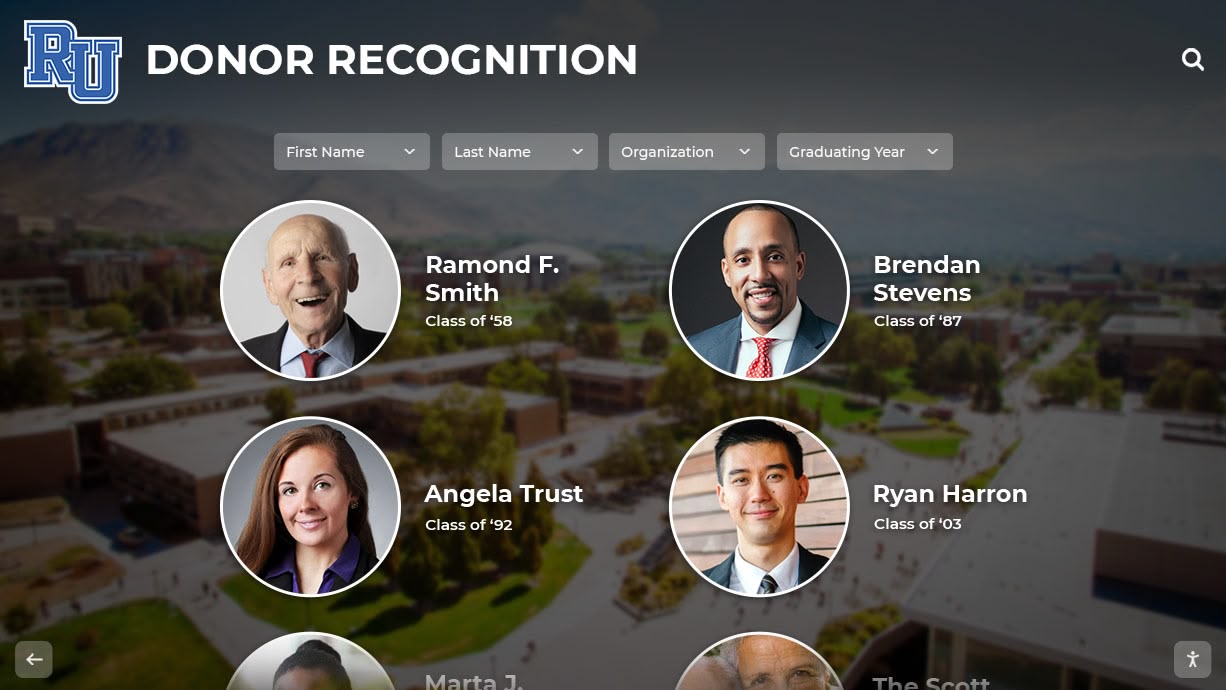
Physical Recognition Displays and Trophy Cases
Traditional physical displays showcasing graduate achievements create visible institutional pride while providing permanent acknowledgment that outlasts ceremonial moments.
Common Physical Recognition Formats:
Engraved Plaques: Wall-mounted plaques featuring graduate names, graduation years, and achievement descriptions represent timeless recognition approaches. These plaques often line hallways, lobbies, or dedicated recognition spaces, creating lasting tributes to distinguished graduates.
Photo Display Walls: Grid arrangements of framed graduate photographs—organized by graduation year, achievement type, or alphabetically—provide visual impact and immediate recognition when graduates visit campuses years later.
Trophy Cases: Glass display cases showcase three-dimensional recognition items including awards, medals, championships, publications, patents, or memorabilia documenting graduate accomplishments. Physical artifacts create emotional connections that text-only recognition cannot match.
Brick Pavers and Donor Walls: Outdoor walkways or walls featuring engraved bricks or donor plaques acknowledge graduates who support institutions philanthropically, creating permanent outdoor recognition complementing indoor displays.
While physical displays offer tangible permanence and classic aesthetics, they face inherent limitations: finite space eventually fills requiring difficult removal decisions, high per-recognition costs accumulate as graduate numbers grow, minimal information capacity beyond names and basic details, and static presentations that generate limited engagement beyond brief viewing.
Distinguished Alumni Recognition Programs
Beyond immediate graduation acknowledgment, many schools implement ongoing programs recognizing graduates who achieve exceptional success, contribute meaningfully to society, or bring honor to their alma maters through distinguished careers and accomplishments.
Alumni Halls of Fame
Alumni halls of fame represent perhaps the most prestigious recognition schools bestow on graduates, honoring those who’ve reached extraordinary career heights, made significant community contributions, or demonstrated exceptional character and achievement aligned with institutional values.
Purpose and Benefits:
Halls of fame serve multiple strategic purposes:
Inspire Current Students: Seeing graduates who walked similar paths achieve remarkable success makes possibilities tangible. Students exploring career directions discover alumni working in fields they’re considering, learning about journeys, challenges, and opportunities these graduates encountered. These real-world examples complement formal advising with authentic voices from people who faced similar decisions.
Strengthen Alumni Connections: Recognition creates emotional bonds between honored graduates and institutions. Alumni who receive hall of fame induction typically maintain stronger engagement, participate more actively in events, contribute more generously to fundraising, and advocate more enthusiastically for their alma maters.
Build Institutional Reputation: Showcasing distinguished graduates demonstrates institutional quality to prospective students, families, donors, and community members. These tangible examples of graduate success provide social proof addressing questions about educational value and career preparation quality.
Preserve Institutional History: Recognition programs document organizational evolution, showing who attended, when they graduated, what they accomplished, and how institutions influenced various fields, industries, and social movements through leaders prepared within their walls.
Schools can create comprehensive alumni halls of fame following systematic planning addressing selection criteria, display options, content development, and sustainability considerations ensuring programs deliver lasting value.

Selection Criteria and Nomination Processes
Effective hall of fame programs establish clear, objective criteria ensuring fair evaluation while maintaining credibility and community confidence in recognition decisions.
Common Selection Standards:
Professional Achievement: Career success demonstrated through leadership positions, pioneering innovations, successful enterprises, or significant field contributions. This category recognizes graduates who’ve attained exceptional career distinction while advancing their professions or industries.
Academic and Research Excellence: Scholarly achievement through distinguished faculty positions, influential research contributions, significant publications, or educational leadership advancing knowledge and learning. Academic halls of fame particularly value these achievements alongside broader professional success.
Public Service and Civic Leadership: Community contributions through elected office, military service, nonprofit leadership, humanitarian work, or other efforts improving societal wellbeing beyond personal career achievement. These recognitions honor graduates who dedicate themselves to serving others.
Entrepreneurship and Innovation: Founding companies, developing groundbreaking products, disrupting industries, or creating significant economic impact through entrepreneurial ventures. Entrepreneurial graduates demonstrate institutional influence on innovation and business creation.
Arts and Cultural Achievement: Excellence in visual arts, performing arts, literature, music, film, journalism, or other creative fields through professional success or cultural impact. These categories ensure diverse talent forms receive appropriate recognition.
Character and Institutional Connection: Demonstrated integrity, ethical leadership, embodiment of institutional values, ongoing engagement through mentorship or support, and serving as role models for current students. Character considerations prevent purely credential-based selections while valuing graduates who maintain meaningful connections.
Transparent nomination processes encourage broad participation: online forms collecting comprehensive information, multiple nomination sources (alumni, faculty, students, community), clear annual deadlines creating predictable rhythms, and fair committee evaluation ensuring diverse perspectives inform selections.
Induction Ceremonies and Ongoing Engagement
Hall of fame programs create natural engagement opportunities extending beyond initial selection through ceremonial celebrations and ongoing profile enhancements.
Ceremony Best Practices:
Coordinate induction events with high-visibility occasions maximizing attendance and media coverage:
Homecoming Integration: Large alumni attendance and existing festive atmosphere provide ideal contexts for honoring distinguished graduates while current students witness recognition firsthand.
Reunion Weekends: Milestone reunions for inductees’ graduation classes create natural family gatherings where classmates celebrate peers’ achievements collectively.
Athletic Events: Major games or competitions draw crowds providing built-in audiences for halftime or pre-game recognition ceremonies.
Dedicated Annual Events: Some schools establish signature hall of fame ceremonies becoming anticipated annual traditions focused specifically on celebrating distinguished alumni.
Ceremony programming typically includes formal unveiling or presentation, individual acknowledgment with biographical summaries, brief remarks from inductees sharing experiences and advice, recognition of selection committees and major donors, interactive demonstrations showing how to explore profiles, and receptions allowing guests to engage with honorees personally.
Beyond initial induction, maintain ongoing engagement through featured alumni spotlights in communications, profile updates as careers evolve, mentorship program participation connecting inductees with current students, speaking engagements bringing distinguished graduates back to campus, and anniversary recognition celebrating milestone induction years.
Modern Digital Recognition Innovations
Technology has transformed graduate recognition, addressing traditional limitations while creating enhanced engagement opportunities that extend acknowledgment far beyond physical campus boundaries.
Interactive Touchscreen Halls of Fame
Interactive digital recognition displays represent perhaps the most significant advancement in graduate recognition technology, enabling schools to create comprehensive, engaging experiences impossible with traditional physical displays.
Key Advantages:
Unlimited Recognition Capacity: Digital platforms eliminate space constraints entirely. Single touchscreens showcase thousands of graduates without spatial limitations or difficult decisions about removing earlier recognition to accommodate new honorees. This unlimited capacity proves particularly valuable for institutions with growing alumni populations and decades of graduates deserving acknowledgment.
According to industry research, 63% of people report that digital signage catches their attention compared to 30% who notice traditional signs. This increased engagement means more students, families, and visitors actually interact with recognition content rather than glancing briefly at static displays.
Rich Multimedia Profiles: Digital systems enable detailed recognition far beyond names and basic information:
- Professional photographs from multiple life stages
- Video interviews featuring graduates sharing experiences
- Audio recordings preserving personal stories
- Document digitization showing awards, publications, articles
- Interactive timelines documenting career progression
- Links to professional profiles and personal websites
- Searchable databases allowing instant graduate location
Interactive Exploration Features: Unlike static displays visitors glance at while passing, touchscreens invite active engagement through intuitive navigation:
- Name search with auto-complete suggestions
- Graduation year filtering and browsing
- Achievement category selection
- Career field exploration
- Random discovery for serendipitous exploration
- Related graduate suggestions based on connections
Remote Content Management: Cloud-based platforms enable authorized staff to update profiles, add new inductees, and enhance content from any internet-connected device without requiring technical expertise. After induction ceremonies, administrators can add new graduates to displays within minutes rather than waiting weeks for plaque fabrication and installation.
Solutions like digital hall of fame systems from Rocket Alumni Solutions provide purpose-built platforms designed specifically for educational recognition, offering features generic content systems cannot match while eliminating compromises required when adapting general-purpose tools.
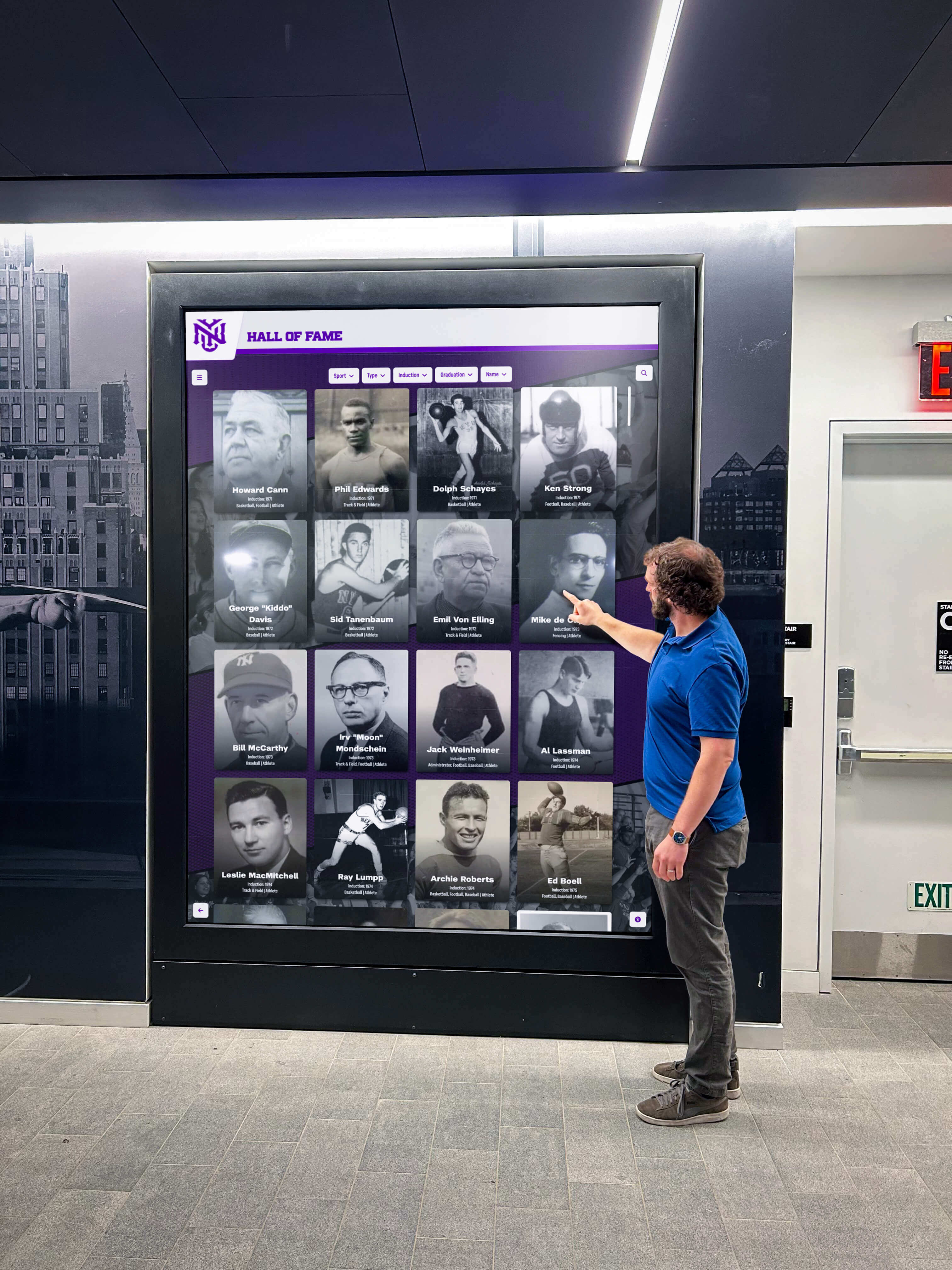
Web-Accessible Alumni Directories
Complementing physical touchscreen displays, web-accessible recognition platforms extend acknowledgment globally, enabling alumni worldwide to explore graduate achievements, reconnect with classmates, and share recognition content with families and professional networks.
Online Recognition Benefits:
Geographic Access: Graduates living far from campus can view recognition without traveling, particularly valuable for geographically distributed alumni populations. This global accessibility strengthens connections for graduates unable to visit physically while demonstrating that distance doesn’t diminish institutional appreciation.
Social Integration: Web platforms enable social media sharing, allowing honored graduates to post recognition to professional networks, family connections, and friend communities. This organic amplification extends institutional reputation far beyond direct communications capabilities.
Search Engine Visibility: Online recognition creates searchable content prospective students, journalists, researchers, and community members discover when exploring institutional quality, graduate success, or specific alumni. This visibility demonstrates educational value through concrete achievement examples.
24/7 Accessibility: Unlike physical displays limited by campus access hours, online platforms remain available constantly, allowing alumni to explore recognition during late evenings, weekends, or whenever curiosity strikes without visiting constraints.
Mobile Responsiveness: Modern platforms adapt seamlessly to smartphones, tablets, and computers, ensuring consistent experiences regardless of device type or screen size. Mobile optimization proves essential as increasing proportions of traffic originate from phones rather than traditional computers.
Digital Ceremony Enhancements
Technology increasingly enhances graduation ceremonies themselves, extending participation beyond physical attendees while creating sharable content that amplifies recognition impact.
Modern Ceremony Technologies:
Live Streaming: Broadcasting ceremonies enables distant family members, deployed military, working relatives, or geographically separated loved ones to participate virtually in graduation celebrations. Archived streams allow graduates to revisit ceremonies later while sharing with those unable to attend live.
Virtual Reality Experiences: Emerging VR technology creates immersive ceremony experiences for remote participants, providing presence sensations traditional streaming cannot match. While still developing, VR graduation attendance may become increasingly common as technology matures and becomes more accessible.
Social Media Integration: Real-time social sharing during ceremonies through dedicated hashtags, Instagram stories, or live updates creates collective digital celebrations complementing physical events. These social layers extend ceremony impact through organic networks far beyond controlled institutional channels.
Digital Diplomas and Credentials: Blockchain-based digital credentials provide secure, verifiable electronic diplomas graduates can share instantly with employers, educational institutions, or professional organizations. Digital credentials complement rather than replace traditional physical diplomas while offering verification and sharing advantages.
Photo Recognition AI: Automated photography systems using facial recognition identify individual graduates in ceremony photos, enabling personalized image galleries delivered directly to graduates and families. This technology transforms general ceremony documentation into individualized recognition content.
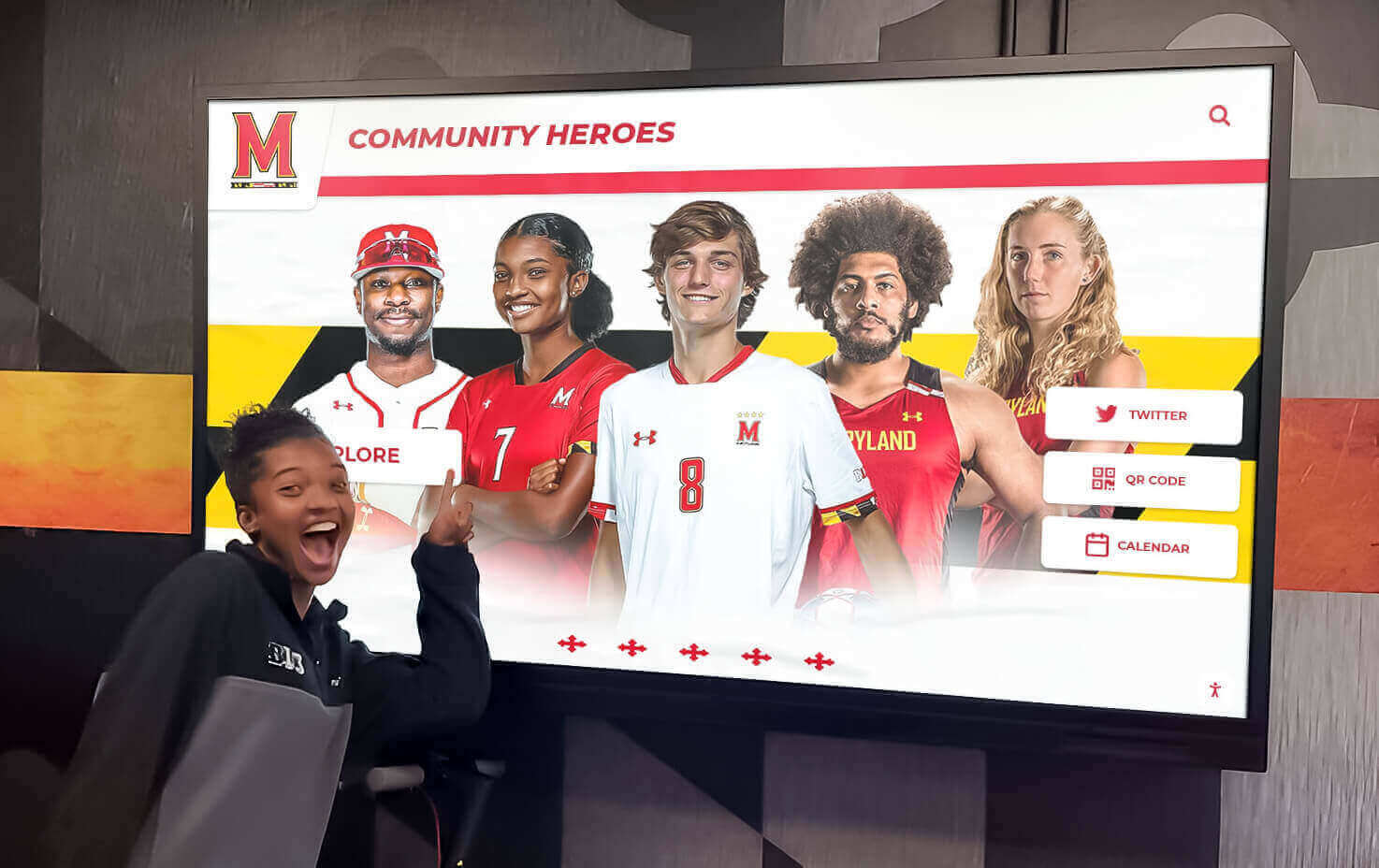
Subject-Specific Graduate Recognition
Beyond general graduate acknowledgment, schools often implement specialized recognition programs celebrating excellence in particular academic disciplines, activity areas, or achievement categories.
Athletic Halls of Fame and Sports Recognition
Athletic achievement represents one of the most visible and celebrated forms of graduate success, prompting many schools to maintain dedicated athletic recognition programs alongside general alumni honors.
Athletic Recognition Categories:
Individual Athlete Achievement: Recognition for graduates who competed professionally, achieved All-American distinction, earned conference honors, broke institutional records, or demonstrated exceptional athletic excellence during school careers. These honors celebrate on-field accomplishments while inspiring current athletes.
Team Championships: Commemorating championship teams and their members creates collective recognition honoring groups who achieved together rather than only individuals. Team recognition reinforces collaboration value while acknowledging that some greatest achievements result from coordinated efforts.
Coaching Excellence: Distinguished coaches who built successful programs, mentored generations of athletes, or advanced athletic departments deserve recognition alongside players they developed. Coaching honors acknowledge leaders who shaped institutional athletic cultures.
Athletic Administration: Athletic directors, administrators, and support staff whose leadership, vision, or dedication advanced athletic programs merit recognition for contributions beyond direct competition. These acknowledgments ensure comprehensive athletic excellence receives appropriate honors.
Athletic recognition often integrates with general alumni halls of fame or maintains separate programs in dedicated gymnasium or athletic facility spaces. Digital record boards enable comprehensive documentation of athletic achievement across all sports, records, and eras without space constraints limiting recognition.
Academic Department Honors
Subject-specific recognition celebrates graduates who achieved distinction in particular disciplines, ensuring diverse forms of intellectual excellence receive appropriate acknowledgment beyond cumulative GPA-based honors.
Departmental Recognition Approaches:
Outstanding Graduate Awards: Departments identify top graduates annually based on academic performance, research contributions, thesis quality, comprehensive examination results, or holistic excellence demonstrated throughout programs. These awards acknowledge students who most distinguished themselves within specific fields.
Research Excellence Recognition: Graduate students who produce exceptional research, publish in prestigious journals, present at major conferences, or make significant scholarly contributions merit recognition separate from coursework achievement. Research honors validate academic contributions beyond grade transcripts.
Creative Achievement Awards: Fine arts, performing arts, creative writing, and design programs recognize graduates whose creative work achieved exceptional quality, received external recognition, or demonstrated outstanding artistic merit. Creative awards ensure non-traditional academic excellence receives appropriate acknowledgment.
Service Learning Distinction: Graduates who exemplified community engagement, service learning excellence, civic participation, or applied their education to addressing real-world challenges deserve recognition for connecting learning to meaningful action beyond classroom boundaries.
Departmental recognition creates multiple acknowledgment opportunities ensuring students with specialized excellence receive honors even when broader institutional recognition might overlook their particular achievements. These subject-specific programs demonstrate that excellence takes many forms across diverse disciplines and contribution types.

National Recognition Programs Integration
External recognition programs provide standardized acknowledgment of exceptional achievement carrying particular weight for college applications, graduate school admissions, and scholarship competitions.
Major National Recognition Programs:
National Merit Scholarship Program: Recognition for exceptional PSAT performance provides prestigious acknowledgment schools should celebrate alongside internal honors. Highlighting graduates who qualified as National Merit Semifinalists, Finalists, or Scholarship recipients demonstrates institutional preparation quality while inspiring younger students to pursue similar distinction.
College Board National Recognition Programs: As of 2025, the College Board offers academic honors to high-performing students of all backgrounds from schools nationwide based on achievement in AP Exams and PSAT-related assessments. The program includes School Recognition Award (honoring top-performing students in high schools nationwide), First-Generation Recognition Award (for students on track to be first in families completing college), and Rural and Small-Town Recognition Award (elevating students from smaller communities).
National Honor Society: Membership in National Honor Society, National Junior Honor Society, and subject-specific honor societies (Mu Alpha Theta for mathematics, National English Honor Society, etc.) represents selective recognition combining academic achievement with character, leadership, and service. Schools should acknowledge students inducted into these prestigious organizations.
Academic Olympiads and Competitions: Success in mathematics competitions (AMC, MATHCOUNTS), science fairs, writing contests, history day, debate tournaments, and other academic competitions provides objective evidence of excellence. Competition recognition validates achievement through external assessment rather than internal grading standards.
Celebrating external recognition demonstrates that schools value achievement regardless of who officially bestows honors while connecting students to prestigious national programs that enhance college applications and provide networking opportunities with accomplished peers from other institutions.
Best Practices for Comprehensive Graduate Recognition
Schools seeking to maximize recognition program effectiveness while honoring graduates meaningfully should follow established best practices addressing planning, implementation, sustainability, and continuous improvement.
Establish Multiple Recognition Tiers
Comprehensive programs create various recognition opportunities ensuring diverse forms of achievement receive appropriate acknowledgment at different prestige levels.
Recognition Tier Framework:
Universal Recognition: All graduates receive basic acknowledgment through diplomas, ceremony participation, yearbook inclusion, and general alumni directory listing. This foundation ensures every graduate experiences recognition regardless of additional honors earned.
Merit-Based Honors: Academic excellence categories like honor roll, dean’s list, Latin honors, or departmental awards recognize strong performance above baseline graduation requirements. These widely available honors acknowledge solid achievement while remaining accessible to significant graduate portions.
Competitive Distinctions: Selective recognition like valedictorian designation, outstanding graduate awards, or specific achievement competitions creates prestigious acknowledgment for exceptional performance. Limited numbers receiving these honors maintain distinction value while providing aspirational targets.
Career Achievement Recognition: Hall of fame inductions, distinguished alumni awards, or lifetime achievement honors acknowledge post-graduation success and contributions occurring years or decades after initial graduation. These ultimate recognitions celebrate distinguished careers and meaningful impact over time.
Tiered approaches ensure schools recognize graduates appropriately across achievement continuums rather than binary acknowledged/not-acknowledged models that exclude many deserving individuals from any recognition beyond basic graduation.
Create Clear, Transparent Criteria
Recognition credibility depends on community confidence that selections follow fair, objective standards consistently applied across all candidates.
Criteria Development Best Practices:
Objective Standards: Establish measurable thresholds (GPA requirements, achievement documentation, time since graduation minimums) preventing purely subjective selections vulnerable to favoritism perceptions. Objective criteria create defensible decisions while simplifying evaluation.
Published Expectations: Communicate criteria explicitly in handbooks, websites, nomination forms, and promotional materials so potential nominees and nominators understand evaluation standards. Transparency builds community confidence while helping self-selection of appropriate candidates.
Consistent Application: Apply published criteria uniformly across all nominees without creating exceptions or special circumstances undermining stated standards. Consistency maintains credibility even when specific decisions generate questions.
Diverse Selection Committees: Include representatives from various constituencies (administration, faculty, alumni, students, community) ensuring multiple perspectives inform decisions rather than narrow favoritism dominating selections.
Documented Processes: Maintain clear records showing how selections followed established procedures, enabling future committees to understand precedents while demonstrating systematic evaluation rather than arbitrary choices.
Clear criteria prevent controversies that undermine recognition program credibility while ensuring honored graduates genuinely merit acknowledgment according to transparent standards the community understands and accepts.
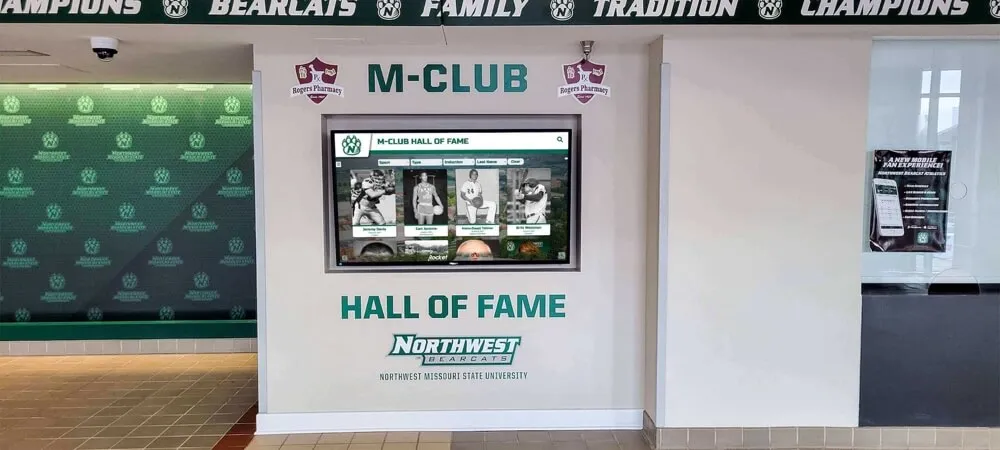
Invest in Content Quality
Recognition systems provide infrastructure, but compelling content creates meaningful engagement distinguishing beloved programs from underutilized displays.
Content Excellence Strategies:
Professional Photography: High-quality graduate photographs significantly enhance recognition presentations, creating visual impact that casual snapshots cannot match. Invest in professional headshots for hall of fame inductees or encourage submission of professionally captured images.
Compelling Narratives: Well-written biographical content balances factual achievement documentation with engaging storytelling revealing the humans behind accomplishments. Focus on transformation narratives showing how education influenced trajectories, obstacles overcome demonstrating resilience, and specific concrete details making achievement tangible rather than abstract.
Multimedia Integration: Video interviews, audio recordings, document digitization, and photo galleries create rich profiles significantly more engaging than text-only recognition. Multimedia elements bring achievement stories to life while providing authentic graduate voices sharing experiences directly.
Regular Updates: Keep profiles current by adding new career milestones, awards, or changed information as lives evolve. Outdated content undermines recognition value while suggesting schools don’t maintain programs carefully. Cloud-based platforms make updates straightforward when processes exist for collecting new information systematically.
Accessibility Compliance: Ensure content remains accessible to individuals with disabilities through screen reader compatibility, text alternatives for images, video captions, and interface designs accommodating various assistive technologies. Inclusive access demonstrates that recognition programs value all community members.
Quality content transforms recognition displays from simple name lists into compelling resources that capture attention, inspire exploration, and create emotional connections lasting far beyond brief viewing moments.
Plan for Long-Term Sustainability
Recognition programs that begin with enthusiasm sometimes fade due to resource constraints, changing priorities, or leadership transitions. Ensure sustainability through systematic planning.
Sustainability Strategies:
Endowed Funding: Establish dedicated financial resources through fundraising campaigns, corporate sponsorships, or budget allocations ensuring recognition programs maintain consistent support across leadership changes. Endowments remove annual budget competition while enabling long-term planning.
Distributed Responsibilities: Train multiple administrators to manage recognition systems preventing dependence on single individuals whose departures would disrupt programs. Documentation, training materials, and cross-trained staff ensure continuity despite inevitable personnel changes.
Institutional Integration: Embed recognition into advancement, alumni relations, communications, and student life priorities rather than treating as standalone projects vulnerable to elimination during budget pressures. Integration demonstrates ongoing commitment while ensuring recognition remains organizational priority.
Predictable Cycles: Establish annual rhythms for nominations, selections, inductions, and updates creating community anticipation and operational consistency. Predictable cycles become institutional traditions that persist across administration changes.
Assessment and Improvement: Conduct regular program evaluations measuring engagement, community satisfaction, operational efficiency, and alignment with institutional goals. Assessment demonstrates value to leadership while identifying enhancement opportunities ensuring programs evolve rather than stagnate.
Strategic sustainability planning transforms recognition from temporary initiatives into enduring traditions serving institutions and graduates effectively for decades.
Measuring Graduate Recognition Impact
Effective programs track outcomes demonstrating value while identifying improvement opportunities through quantitative metrics and qualitative feedback.
Key Performance Indicators
Engagement Metrics:
- Physical display interaction frequency (observation or sensors)
- Digital display session duration and profile views
- Web platform traffic, search patterns, and return visits
- Social media engagement, sharing, and reach
- Ceremony attendance and participation rates
Community Impact:
- Alumni giving participation changes following recognition
- Event attendance at inductions and alumni programs
- Nomination submission volume and quality
- Student feedback on inspiration and career exploration
- Media coverage and public awareness
Operational Efficiency:
- Staff time required for program administration
- Cost per graduate recognized across recognition types
- Update frequency maintaining current information
- Technology reliability and maintenance requirements
Regular measurement demonstrates program value to administrators while revealing opportunities for content enhancement, navigation optimization, technology upgrades, or strategic refinement. Digital systems provide detailed analytics impossible with traditional displays, enabling data-driven continuous improvement.
Return on Investment Considerations
Recognition programs require financial investment—whether purchasing plaques, installing displays, or implementing digital systems. Understanding ROI helps justify expenditures while selecting approaches delivering maximum long-term value.
Cost Comparison Framework:
Traditional physical recognition typically costs $100-500 per graduate for plaques or photo frames, plus annual maintenance expenses ($500-2,000) and eventual space constraints requiring expansion or removal decisions. Over 10 years recognizing 100 graduates, total investment reaches $25,000-60,000.
Digital interactive systems cost $8,000-25,000 initially for comprehensive installations (hardware, software, setup, training) with minimal ongoing expenses ($0-1,200 annually) and zero per-graduate costs. Over 10 years recognizing 100+ graduates, total investment remains $12,000-30,000 while accommodating unlimited additional recognition.
While digital systems carry higher upfront costs, elimination of per-graduate expenses creates significant long-term advantages for institutions with growing populations. The ROI of digital alumni recognition typically becomes apparent within 3-5 years for active programs.
Beyond direct cost comparisons, consider strategic value: enhanced alumni engagement increasing giving participation, strengthened institutional reputation attracting students and support, preserved institutional history creating lasting archives, and inspired current students motivated by tangible success examples. These strategic benefits often outweigh implementation costs when recognition programs achieve full potential.
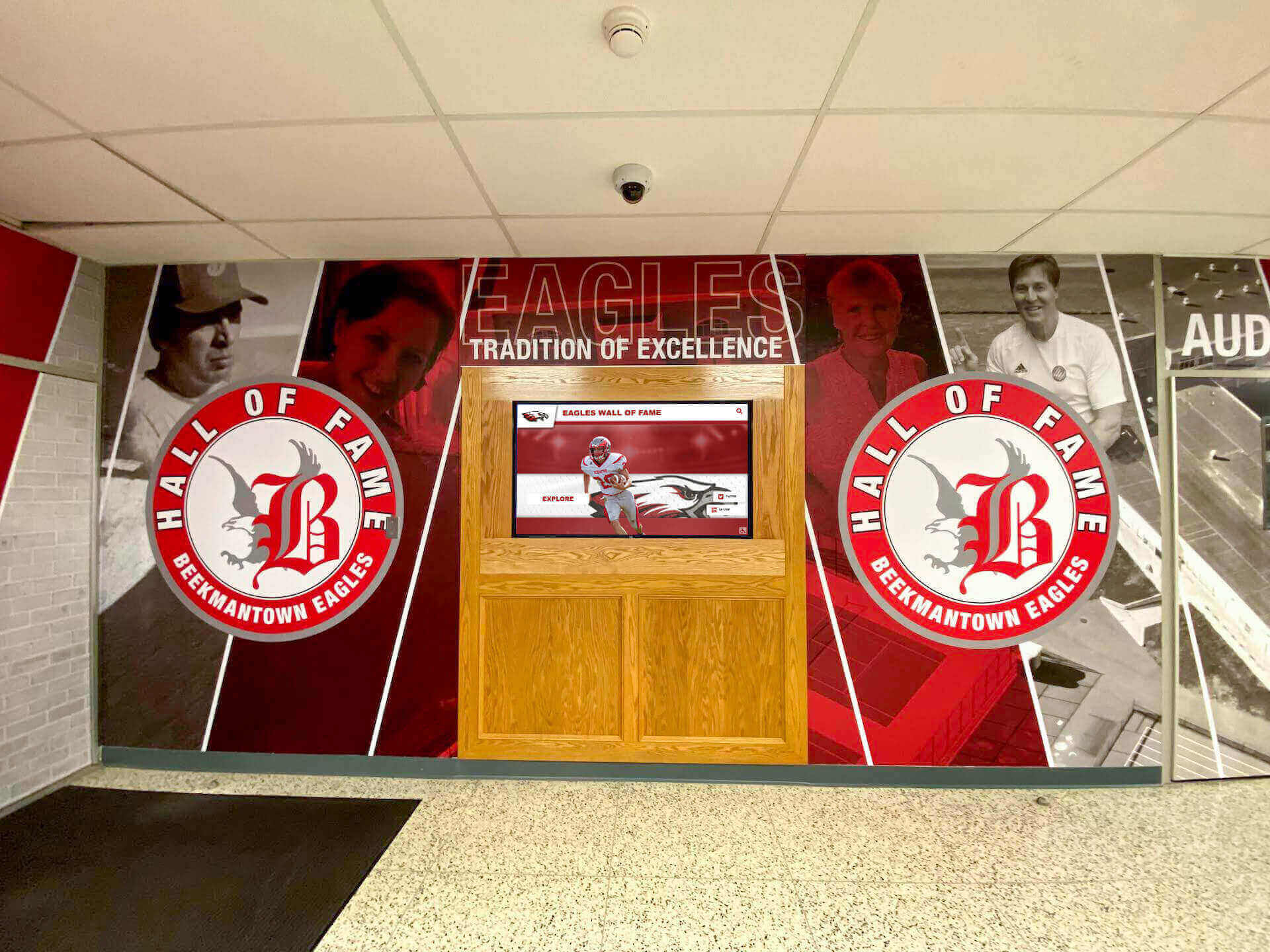
Emerging Trends in Graduate Recognition
Recognition practices continue evolving as technology advances, generational expectations shift, and institutions seek increasingly effective engagement methods.
Personalization and Customization
Modern recognition increasingly emphasizes individualized experiences rather than one-size-fits-all approaches. Personalization technologies enable recognition programs to suggest relevant content based on viewing patterns, create customized emails highlighting graduates from recipients’ eras or fields, and offer interactive pathways reflecting individual interests rather than prescribed navigation.
Graduates themselves increasingly expect agency in how they’re presented, requesting profile updates, contributing personal reflections, or participating in content creation rather than passive subjects of institutional recognition. Programs that enable graduate participation create more authentic, engaging content while strengthening alumni connections through collaborative recognition rather than top-down acknowledgment.
Inclusive Recognition Expansion
Contemporary recognition programs increasingly celebrate diverse achievement forms beyond traditional academic and career success metrics. Schools recognize community service excellence, advocacy and activism advancing important causes, creative and artistic achievement, entrepreneurship and innovation, overcoming adversity and demonstrating resilience, and commitment to equity and social justice.
These expanded recognition categories ensure graduates from various backgrounds, career paths, and contribution types experience acknowledgment rather than narrow definitions that favor certain achievement forms or professional fields. Inclusive recognition demonstrates that institutions value diverse excellence while honoring the reality that meaningful contribution takes countless forms across human endeavor.
Integration with Career Services and Mentorship
Forward-thinking schools increasingly connect recognition programs with career exploration and mentorship initiatives, transforming halls of fame from historical documentation into active career development resources.
Interactive alumni directories enable students to search by career field, geographic location, or background characteristics, discovering graduates working in fields they’re considering. These connections facilitate informational interviews, job shadowing, internship opportunities, and ongoing mentorship relationships that provide practical guidance complementing formal advising.
When alumni recognition programs integrate with student services, recognition becomes active rather than passive—serving current students directly while deepening recognized graduates’ institutional connections through meaningful engagement opportunities that benefit both generations.
Mobile-First and Social-Native Design
As mobile devices become primary internet access points for many users, recognition platforms must prioritize mobile experiences rather than treating phones as secondary display options. Mobile-first design ensures recognition remains accessible whenever and wherever alumni engage rather than requiring desktop computers or physical campus visits.
Social media integration enables recognized graduates to share acknowledgment through preferred platforms—LinkedIn for professional networks, Facebook for family connections, Instagram for visual sharing. Social distribution extends institutional reputation organically while validating recognition importance when honored graduates proudly share acknowledgment with their communities.
Conclusion: Building Comprehensive Recognition Programs
Graduate recognition serves purposes far beyond ceremonial obligation or administrative requirement. When implemented thoughtfully with strategic planning, fair processes, quality content, and sustainable operations, recognition programs deliver profound returns across inspiration, engagement, reputation, preservation, and pride dimensions that benefit schools and graduates for generations.
The most effective schools recognize graduates comprehensively across multiple dimensions:
Immediate Graduation Recognition: Meaningful ceremonies, academic honors, diploma conferral, and celebration of educational achievement completion creating memorable experiences that validate years of work and effort.
Ongoing Engagement Recognition: Alumni directories, regular communications, reunion integration, and sustained visibility demonstrating that graduate relationships extend far beyond graduation moments.
Distinguished Achievement Recognition: Halls of fame, lifetime achievement awards, and career success acknowledgment honoring exceptional post-graduation accomplishments and meaningful contributions to professions, communities, and society.
Modern Digital Recognition: Interactive displays, web platforms, social integration, and technology-enabled experiences that extend recognition beyond physical boundaries while creating engaging, searchable, comprehensive acknowledgment impossible with traditional approaches.
The choice between traditional physical recognition and modern digital solutions depends on institutional priorities, budget parameters, space availability, and long-term vision. While physical displays offer tangible permanence and classic aesthetics, digital systems provide unlimited capacity, rich multimedia storytelling, remote management simplicity, web accessibility, and long-term cost advantages particularly compelling for growing institutions seeking sustainable recognition infrastructure.
Regardless of technology choices, critical success factors remain consistent: clear fair criteria ensuring credible selections, compelling quality content that engages and inspires, strategic sustainable planning supporting programs across leadership changes, and genuine institutional commitment demonstrating that recognition remains organizational priority rather than perfunctory obligation.
Solutions like Rocket Alumni Solutions provide purpose-built platforms designed specifically for educational graduate recognition, offering comprehensive systems combining traditional respect with modern capabilities. These specialized tools eliminate compromises required when adapting general-purpose software while providing implementation support ensuring successful deployment and ongoing optimization.
Graduates who’ve achieved meaningful success through education deserve recognition honoring accomplishments while inspiring future generations. Thoughtful, comprehensive recognition programs ensure those achievements receive acknowledgment that strengthens communities, builds lasting pride, and creates legacies of excellence spanning generations. Your graduates have accomplished remarkable things—effective recognition programs ensure those accomplishments inspire students, engage alumni, and build institutional reputation for decades to come.
Ready to Transform Your Graduate Recognition Program?
Explore how digital hall of fame solutions can modernize your recognition approach, or discover comprehensive touchscreen recognition systems that celebrate graduate achievements while building lasting institutional pride.
For personalized guidance on implementing recognition programs aligned with your specific needs and vision, contact Rocket Alumni Solutions to discuss how modern recognition technology can honor your graduates effectively while strengthening alumni engagement across generations.





































